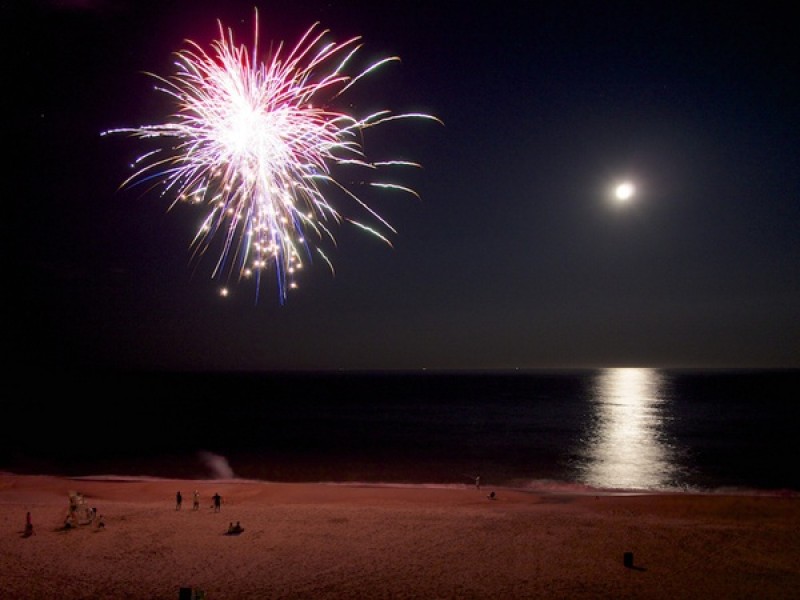
Tuesday, July 3
If ever there was a good time to track down Pluto, this is the night. The distant world appears a mere 3.5" west of the 6th-magnitude star 50 Sagittarii in northeastern Sagittarius, making the task of finding the dwarf planet much easier than usual. Pluto glows dimly at 14th magnitude, however, so you’ll need an 8-inch or larger telescope to spot it visually.
Wednesday, July 4
No holiday better epitomizes summer in the United States than Independence Day. And the season’s namesake asterism — the Summer Triangle — will be on prominent display as fireworks ring out across the land. The trio’s brightest member, Vega in the constellation Lyra the Harp, stands nearly overhead in late evening. The asterism’s second-brightest star, Altair in Aquila the Eagle, then lies about halfway from the southeastern horizon to the zenith. Deneb, the luminary of Cygnus the Swan, marks the Summer Triangle’s third corner. Although it is this asterism’s dimmest star, it’s the brightest point of light in the northeastern sky.
Thursday, July 5
Neptune rises around midnight local daylight time and appears nearly halfway from the southeastern horizon to the zenith as morning twilight commences. The magnitude 7.9 planet lies in Aquarius, 1.0° west-southwest of 4th-magnitude Phi (f) Aquarii. You can confirm your sighting of Neptune through a telescope, which reveals the planet’s 2.3"-diameter disk and blue-gray color.
Friday, July 6
Last Quarter Moon arrives at 3:51 a.m. EDT. It rises in the east around 1 a.m. local daylight time and climbs higher in the southeast as dawn approaches. During this period, our half-lit satellite lies among the background stars of northern Cetus the Whale.
If you ever thought the Sun’s distance controlled temperatures here on Earth, today should convince you otherwise. Earth reaches its most distant point from the Sun at 1 p.m. EDT. At this so-called aphelion, the two lie 94.5 million miles (152.1 million kilometers) apart, some 3.1 million miles (5.0 million km) farther away than they were at perihelion in early January. The Northern Hemisphere’s warm temperatures at this time of year arise because the Sun passes nearly overhead at noon; during winter, the Sun hangs low in the sky.
Saturday, July 7
Observers of the outer solar system can get a good view of Uranus before dawn. The best time to look for it is shortly before twilight begins around 3:30 a.m. local daylight time. Uranus then lies 25° above the eastern horizon among the background stars of southwestern Aries the Ram. This morning, use binoculars to find the magnitude 5.8 planet 4.3° northeast of the 4th-magnitude star Omicron (o) Piscium. A telescope reveals Uranus’ blue-green disk, which spans 3.5".
Sunday, July 8
Although Jupiter reached opposition and peak visibility two months ago, it remains a stunning sight from evening twilight until it sets around 2 a.m. local daylight time. Jupiter shines at magnitude –2.3 and is essentially tied with Mars as the night sky’s brightest point of light once Venus sets by 11 p.m. The gas giant resides among the background stars of Libra the Scales, 2.1° northwest of Zubenelgenubi (Alpha [a] Librae). If you view the planet through a telescope tonight, its disk spans 41" and displays spectacular cloud-top detail.
